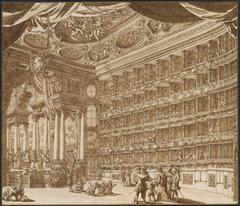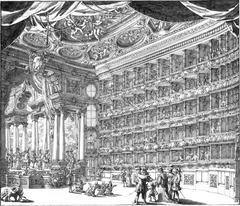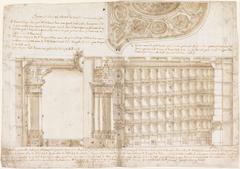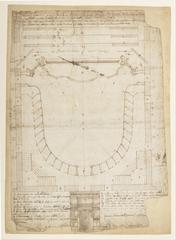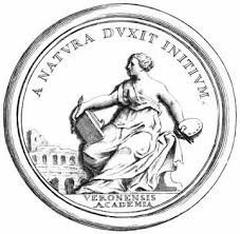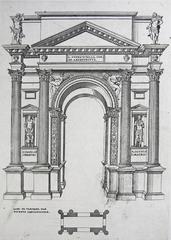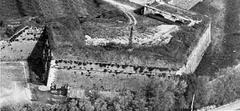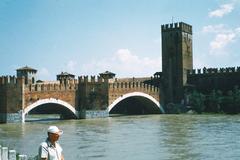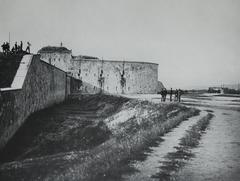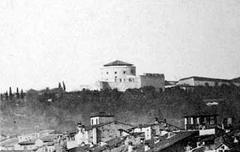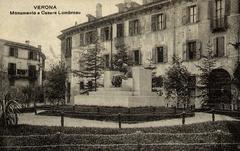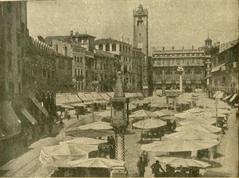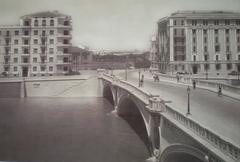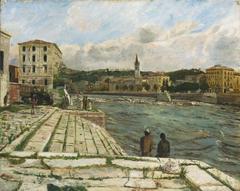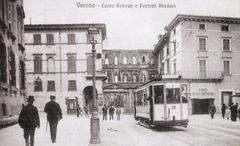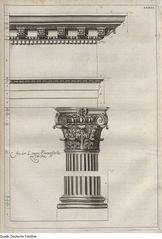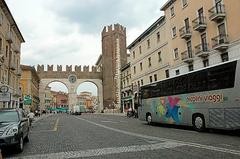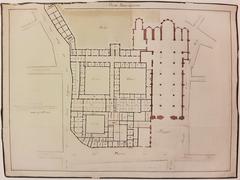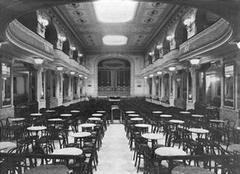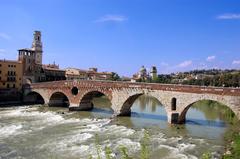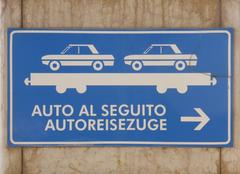
Teatro Filarmonico Verona: Visiting Hours, Tickets, and Historical Significance
Date: 14/06/2025
Introduction
Nestled in the heart of Verona, the Teatro Filarmonico stands as a testament to the city’s enduring musical and cultural heritage. Established by the Accademia Filarmonica di Verona—Europe’s oldest music academy, founded in 1543—the theatre has played a pivotal role in shaping the artistic life of Verona since its inauguration in 1732 with Antonio Vivaldi’s “La Fida Ninfa.” Designed by Baroque architect Francesco Galli Bibiena, the Teatro Filarmonico is renowned for its architectural grandeur, exceptional acoustics, and resilience, having been meticulously rebuilt after devastating fires and World War II bombings. Today, it remains Verona’s premier indoor opera venue, offering visitors a unique blend of history, architectural beauty, and world-class performances (Teatro Filarmonico Verona: History, Visitor Information, and Cultural Highlights; Visiting the Teatro Filarmonico Verona: Hours, Tickets, and Architectural Highlights; Teatro Filarmonico Verona: 2024–2025 Visiting Hours, Tickets, and Performance Schedule).
This guide provides a thorough overview of Teatro Filarmonico Verona, including its historical evolution, architectural features, visitor information, and tips for making the most of your cultural visit to Verona.
Contents
- Historical Overview
- Origins and Foundation
- Architectural Evolution
- Cultural Significance and Visitor Experience
- Visiting Hours, Ticketing, and Accessibility
- Notable Events and Restoration
- Practical Visitor Tips and Nearby Attractions
- Frequently Asked Questions (FAQ)
- Conclusion and Planning Your Visit
- References
Historical Overview
Origins and Foundation
The Teatro Filarmonico’s story begins in the early 18th century, when the Accademia Filarmonica di Verona sought to establish a permanent venue for its concerts and cultural gatherings. Construction commenced in 1716, led by Francesco Galli Bibiena, whose Baroque design introduced a sophisticated horseshoe-shaped auditorium and ornate interiors (Google Arts & Culture). The theatre opened in 1732, immediately elevating Verona’s status as a center for music and the arts.
Architectural Evolution
Baroque Splendor
Bibiena’s original design epitomized the grandeur of Italian Baroque theatre architecture. The auditorium featured five tiers of gilded boxes, classical stuccoes, and a gently sloping arrangement that improved sightlines and acoustics—a pioneering innovation of its era (Wikipedia - Teatro Filarmonico).
Tragedy and Rebirth
The theatre’s history is marked by resilience. A major fire in 1749 led to significant reconstruction and aesthetic updates. The most devastating loss occurred in 1945, when Allied bombing destroyed much of the structure. Restoration, completed in the 1960s and guided by Bibiena’s original plans, preserved the historical character while integrating modern amenities (Wikipedia - Teatro Filarmonico). The theatre reopened in 1975, reclaiming its place at the heart of Verona’s cultural life.
Modern Layout
Today, the auditorium features three orders of gilded boxes, a grand balcony, and a gallery, seating approximately 1,000 patrons. The foyer, or Sala degli Specchi (“Hall of Mirrors”), offers a lavish prelude to performances, while the Sala Maffeiana—remarkably preserved through centuries—is celebrated for its elegant proportions, original wooden flooring, and historic frescoes by Filippo Maccari. This hall famously hosted a young Mozart in 1770 (Wikipedia - Teatro Filarmonico).
Cultural Significance and Visitor Experience
The Teatro Filarmonico remains integral to Verona’s musical identity, serving as the headquarters for the Fondazione Arena di Verona’s artistic and administrative activities. It complements the famed Arena di Verona by offering year-round operatic, symphonic, and ballet performances in a more intimate indoor setting (Teatro.it). The theatre’s reputation for superb acoustics and elegant interiors attracts acclaimed artists and audiences from around the world.
Visiting Hours, Ticketing, and Accessibility
Visiting Hours
- General Opening: Tuesday to Sunday, 10:00 AM – 6:00 PM.
(Hours may vary during performances or special events; always check the official schedule before visiting.)
Ticket Information
- Purchase Options: Tickets are available online via the Fondazione Arena di Verona website, at the box office, or through authorized resellers.
- Pricing: Opera tickets typically range from €20–€100, with discounts for students, seniors, and groups. Concert and event prices vary by program.
- Season Subscriptions: Available for those wishing to attend multiple performances.
Accessibility
- Facilities: The theatre offers wheelchair ramps, accessible seating, and assistive listening devices.
- Assistance: Visitors with special needs are encouraged to contact the box office in advance to arrange accommodations.
Guided Tours
- Availability: Guided tours are offered by appointment, providing access to the auditorium, Sala Maffeiana, and backstage areas. Tours are available in multiple languages and are ideal for those interested in the theatre’s history and architecture.
Notable Events and Restoration
The Teatro Filarmonico has hosted countless premieres and significant performances. The 1975 reopening featured Salieri’s “Falstaff,” symbolizing the theatre’s resilience (GBOpera). The 50th anniversary of this milestone in 2025 will once again feature Salieri’s work (ArtesNews). Other highlights include performances of Puccini’s “Le Villi,” Rossini’s “Il turco in Italia,” and Verdi’s “Ernani,” often bringing new or rarely staged productions to Verona (Arena.it). Restoration projects continue to preserve the theatre’s architectural integrity and enhance its technical capabilities (Arena.it).
Practical Visitor Tips and Nearby Attractions
Getting There
- Address: Via Roma, 1, Verona
- Public Transport: Bus lines 11, 12, and 13 stop nearby.
- Parking: Parcheggio Cittadella and Parcheggio Arena are within walking distance.
Nearby Attractions
The theatre’s central location makes it an ideal starting point for exploring Verona’s historic sites, including:
- Arena di Verona (Roman amphitheatre)
- Piazza delle Erbe (historic market square)
- Juliet’s House (Casa di Giulietta)
Cafés, shops, and restaurants in the vicinity provide ample opportunities to relax before or after your visit.
Visitor Experience
- Dress Code: Smart casual is suitable; formal attire is recommended for gala events.
- Photography: Allowed in the theatre except during performances.
- Family-Friendly: Selected performances and workshops are geared toward families and young audiences.
Frequently Asked Questions (FAQ)
Q: What are the Teatro Filarmonico Verona visiting hours?
A: Tuesday to Sunday, 10:00 AM to 6:00 PM. Hours may vary on performance days.
Q: How can I buy Teatro Filarmonico tickets?
A: Tickets can be purchased online via the official website, at the box office, or through authorized resellers.
Q: Is the theatre accessible for wheelchair users?
A: Yes, the theatre offers ramps, accessible seating, and assistance upon request.
Q: Are guided tours available?
A: Yes, guided tours can be booked by appointment and offer insights into the theatre’s history and architecture.
Q: What other attractions are nearby?
A: The Arena di Verona, Piazza delle Erbe, and Juliet’s House are all within walking distance.
Conclusion and Planning Your Visit
The Teatro Filarmonico Verona is a living monument to the city’s artistic brilliance and resilience. Its Baroque heritage, exceptional acoustics, and dynamic programming make it an essential cultural destination. With convenient visiting hours, accessible facilities, and a wealth of nearby attractions, the theatre offers visitors a chance to experience the very best of Verona’s musical and historical legacy.
To ensure a seamless experience, plan your visit in advance by checking the latest schedules and ticket availability on the official website or through the Audiala app. Combine your theatre visit with explorations of Verona’s iconic sites for a truly memorable cultural journey.
References
- Teatro Filarmonico Verona: History, Visitor Information, and Cultural Highlights
- Visiting the Teatro Filarmonico Verona: Hours, Tickets, and Architectural Highlights
- Teatro Filarmonico Verona: 2024–2025 Visiting Hours, Tickets, and Performance Schedule
- La Stagione Lirica e Sinfonica 2025 del Teatro Filarmonico di Verona, GBOpera
- Verona: La 50a Stagione del Filarmonico (1975-2025), ArtesNews
- Teatro Filarmonico Verona Events, Arena.it
- Music-Opera.com – Verona Teatro Filarmonico Venue
